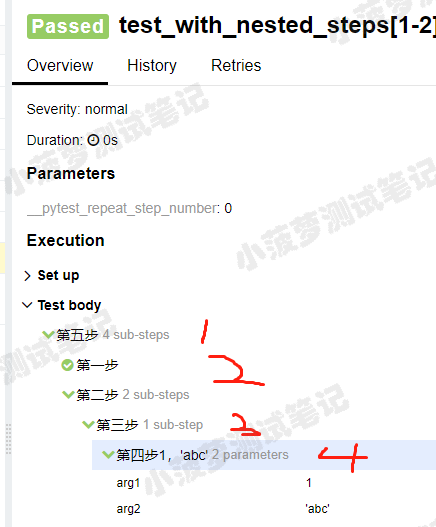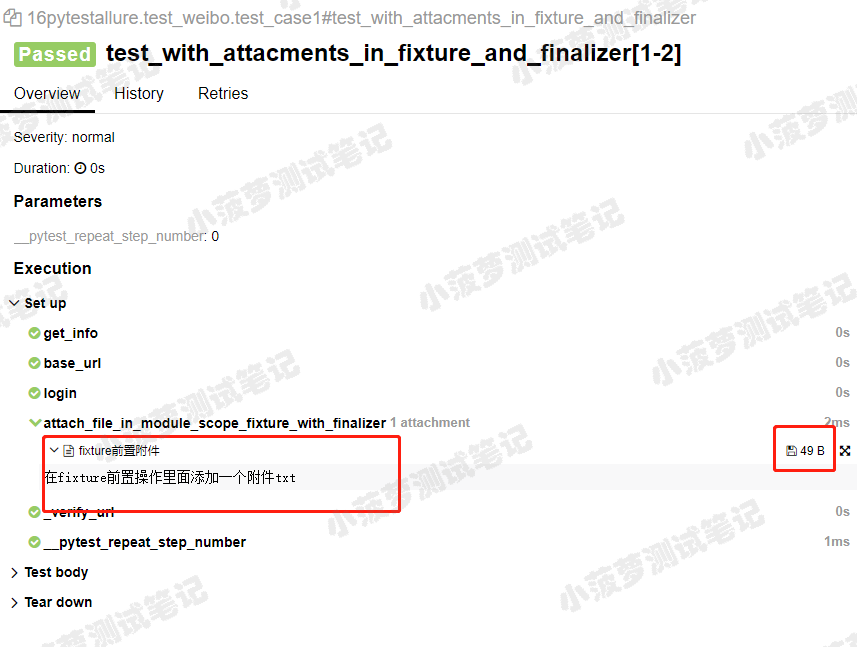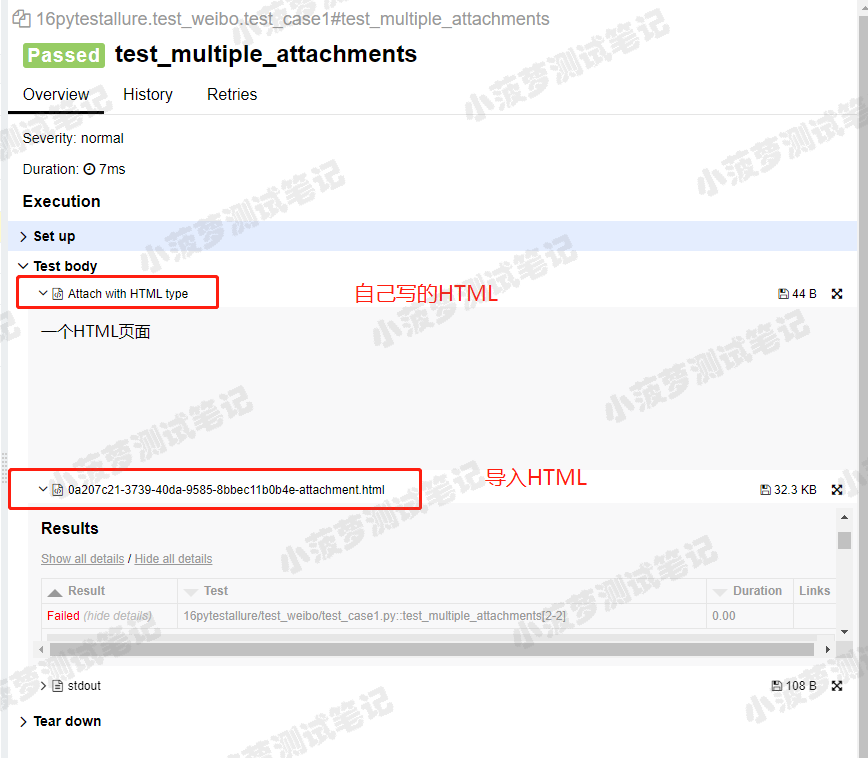| allure的特性,@allure.step()、allure.attach的详细使用 | 您所在的位置:网站首页 › allure添加附件allureattach › allure的特性,@allure.step()、allure.attach的详细使用 |
allure的特性,@allure.step()、allure.attach的详细使用
|
# 前言 allure除了支持pytest自带的特性之外(fixture、parametrize、xfail、skip),自己本身也有强大的特性可以在pytest中使用 # @allure.step allure报告最重要的一点是,它允许对每个测试用例进行非常详细的步骤说明 通过 @allure.step() 装饰器,可以让测试用例在allure报告中显示更详细的测试过程 # 示例代码 import allure @allure.step("第一步") def passing_step(): pass @allure.step("第二步") def step_with_nested_steps(): nested_step() @allure.step("第三步") def nested_step(): nested_step_with_arguments(1, 'abc') @allure.step("第四步{0},{arg2}") def nested_step_with_arguments(arg1, arg2): pass @allure.step("第五步") def test_with_nested_steps(): passing_step() step_with_nested_steps() 12345678910111213141516171819202122232425# 测试用例在allure上的显示
**作用:**allure报告还支持显示许多不同类型的附件,可以补充测试结果;自己想输出啥就输出啥,挺好的 语法: allure.attach(body, name, attachment_type, extension) # 参数列表 body:要显示的内容(附件) name:附件名字 attachment_type:附件类型,是 allure.attachment_type 里面的其中一种 extension:附件的扩展名(比较少用) # allure.attachment_type提供了哪些附件类型?
source:文件路径,相当于传一个文件 其他参数和上面的一致 # 其中一个测试用例的代码栗子 import allure import pytest @pytest.fixture def attach_file_in_module_scope_fixture_with_finalizer(request): allure.attach('在fixture前置操作里面添加一个附件txt', 'fixture前置附件', allure.attachment_type.TEXT) def finalizer_module_scope_fixture(): allure.attach('在fixture后置操作里面添加一个附件txt', 'fixture后置附件', allure.attachment_type.TEXT) request.addfinalizer(finalizer_module_scope_fixture) def test_with_attacments_in_fixture_and_finalizer(attach_file_in_module_scope_fixture_with_finalizer): pass def test_multiple_attachments(): allure.attach(' 一个HTML页面 ', 'Attach with HTML type', allure.attachment_type.HTML) allure.attach.file('./reports.html', attachment_type=allure.attachment_type.HTML) 1234567891011121314151617181920# 运行之后看结果
这是一个txt附件
这是一个用了 allure.attach() 来插入一段自己写的HTML和 allure.attach.file() 来导入一个已存在的HTML文件(pytest-html报告) 本文转自 https://www.cnblogs.com/poloyy/p/12716659.html (opens new window),如有侵权,请联系删除。 |
【本文地址】
公司简介
联系我们




